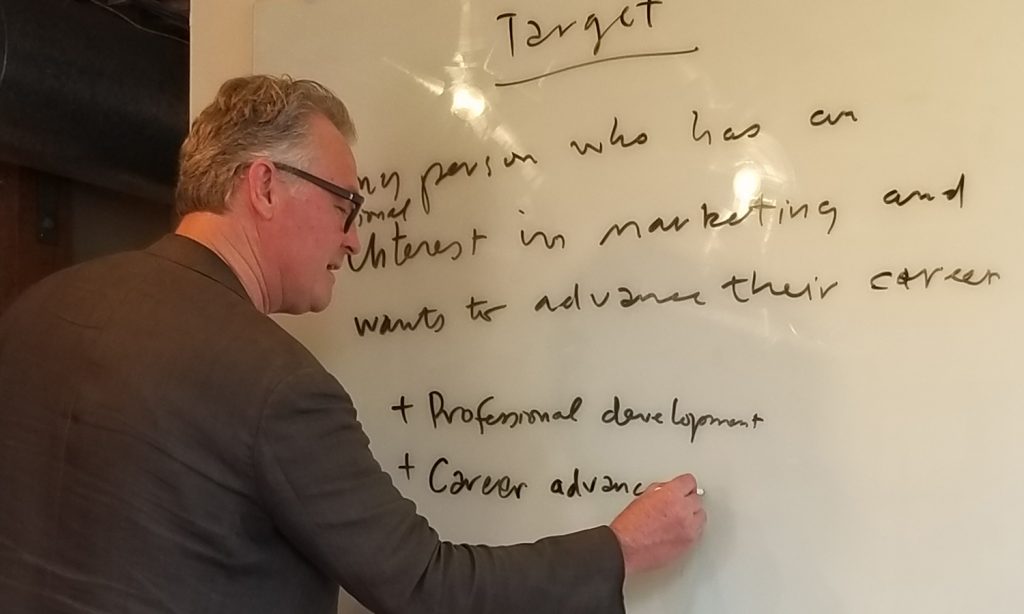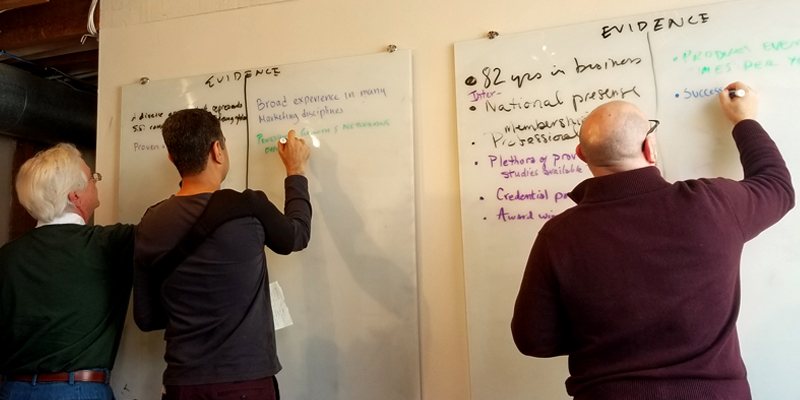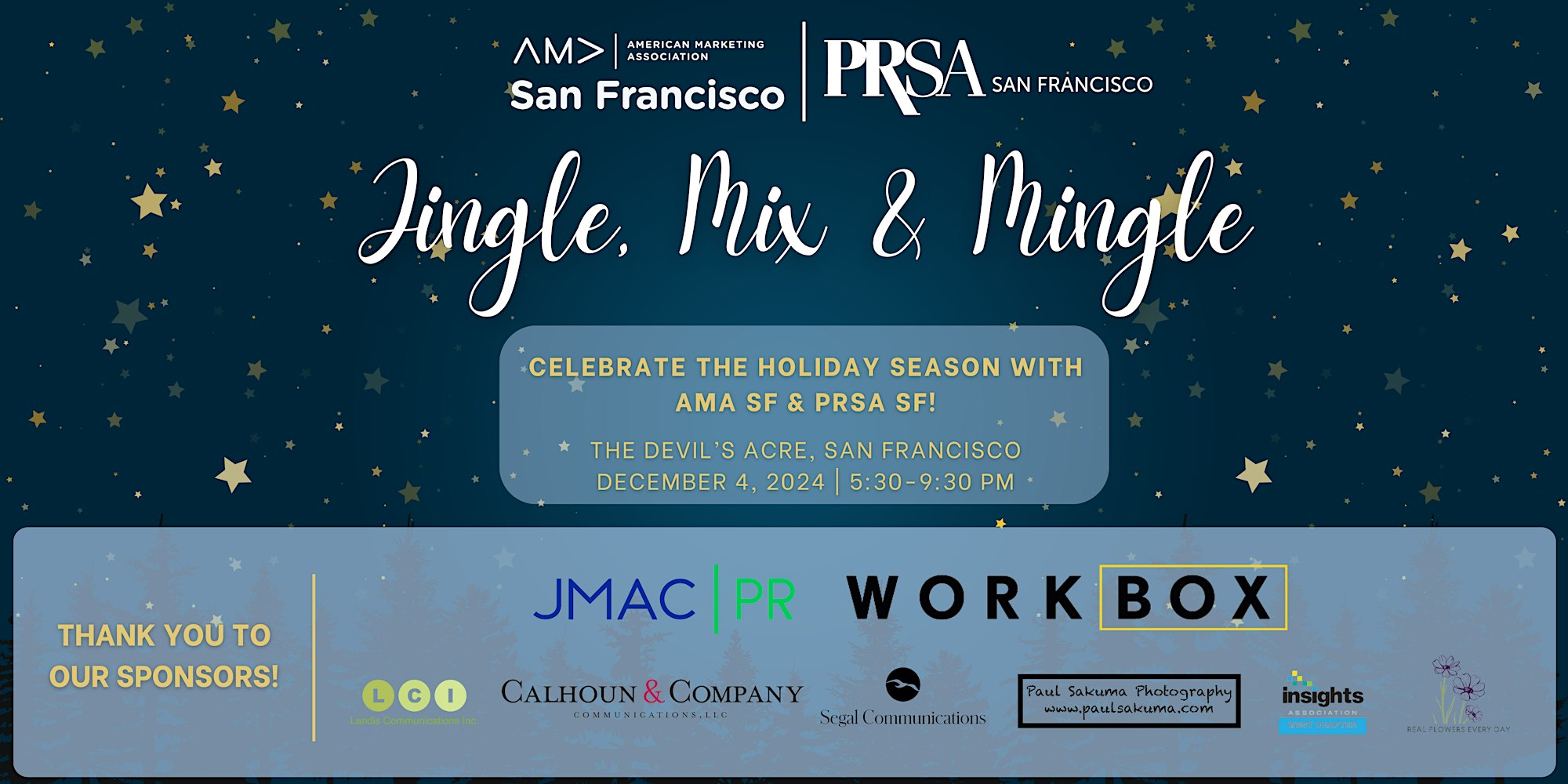The San Francisco chapter of the American Marketing Association (AMA SF) recently merged with the Silicon Valley chapter of the organization, rolling operations into San Francisco. At the same time the AMA SF expanded its territory southward, it seized the opportunity to grow to also include a large segment of the East Bay. The chapter found itself in a position where it was serving a much larger, more culturally diverse region than ever before—and could not expect to carry on operations as though its circumstances had not changed.
It quickly became apparent to chapter leadership that, to benefit the expanded region of marketers it serves, the AMA SF needed to reassess its brand positioning and value proposition—not the brand itself (which is determined by the national organization) but the way the chapter is positioned within the Bay Area marketing community. Although the board and volunteers are some of the most innovative and savvy marketers one could ever hope to work with, they are just that: volunteers. On top of their individual responsibilities with the AMA SF, everybody has a day job. The chapter knew that it could not dedicate sufficient time and effort to do an internal brand audit on its own. They just didn’t have the bandwidth and needed to find some outside help.
Fortunately, being the premier marketing organization in the Bay Area, the AMA SF is well connected and was able to enlist the brand gurus from Chromium to sponsor this endeavor. Chromium led the chapter through their proprietary methodology and BrandArmature® workshop—in which they solicited the perspectives of a group of AMA members and non-member marketers, in addition to key stakeholders.

After Chromium had conducted an initial online survey to lay the groundwork for the exercise, the group was assembled for a full-day workshop that would drill down to the essence of what makes the AMA SF stand out from the crowd of professional organizations in the Bay Area.
It was an awakening for the team of board members participating in the exercise to hear the perspectives of those not as intimately acquainted with the organization. In the years leading up to its merger with Silicon Valley, the San Francisco chapter had become somewhat narrowly focused on thought leadership and tech trends, thus excluding a number of segments of the local marketing community. There were several other organizations occupying the space in which AMA SF was trying to compete. AMA SF needed to set itself apart from the pack. It was important for the chapter to take a step back and look at the demographics of its broadened membership—as well as the expanded pool of potential members not being served by any other organization. This ultimately led to a retooling of the chapter’s mission and vision statements to a place where other organizations are less likely to be able to compete.

After hours of brainstorming and spirited discussion, a number of succinct perspectives rose to the surface. It became clear that the AMA SF is not just a networking organization. It does not just provide training to its members and event attendees. And it doesn’t cater to a narrow demographic, like many other local professional organizations. In fact, the AMA SF provides value at every stage in the span of a marketer’s career. The organization creates a dynamic hub where marketers at a wide range of experience levels, job functions and industries come together to support each other’s professional development, help each other advance their careers, and achieve mastery of their craft.
Eighty-two years of service to Bay Area marketers and being part of the largest marketing association in North America gives the chapter additional credibly and reach. As part of the national AMA network, its members have access to an unparalleled knowledge base of national case studies and Whitepapers—as well as contacts and resources from the 76 chapters across the U.S., Canada, and Mexico. Few, if any, other local marketing organizations are able to provide that degree of connectivity to a network of national talent and knowledge resources.
But, possibly the most significant benefit happens at the local level. The AMA SF prides itself on being opportunity providers—providing opportunities to stay abreast of cutting-edge knowledge and training, networking to become part of a dynamic community of marketers, and the tools to become a thought leader in the industry. Volunteering with the chapter affords a safe space to expand one’s skill set, gaining knowledge and exposure to facets of the industry beyond the activities of a marketer’s day-job.

At the end of the workshop with Chromium, the team proposed a new mission statement for the expanded chapter:
The AMA SF accelerates professional development of our members by helping them achieve marketing mastery within a supportive community.

But, that’s not where the story ends. It is just the beginning. In the AMA SF, as well as any company or organization that wants to execute a cohesive brand strategy, it is crucial to garner a collective commitment from all stakeholders. In this case, it was the elected board—which evolves on a yearly basis. In other organizations it may be the CEO and executive team, however, the point is that it is crucial to get buy-in from all key functions within the organization. The whole is greater than the sum of its parts, and a brand strategy will quickly fall apart with only one channel or team reinforcing it.

Once you have cleared the hurdle of achieving stakeholder buy-in, the next step is to enlist team members from across the organization to evangelize your brand positioning by the constant, almost annoying, reinforcement of its key points. Everyone at every level of the organization (or company) should be trained on these points and shown how to apply them to their work. And, every point of contact within the organization should be reinforcing the same messaging—whether it is coming from a membership call, a sponsorship pitch or cocktail party chat with the president. For the brand team, this degree of consistency is a daunting goal to achieve, let alone enforce. But it will ultimately build a strong and consistent perception of your brand. People will know who you are and what you stand for—and this will help in building continuity, especially as the organization evolves.
So, how do you know when your brand positioning needs to be reconsidered? Keep an eye out for a future AMA SF blog where we delve more deeply into this topic.





Comments are closed.